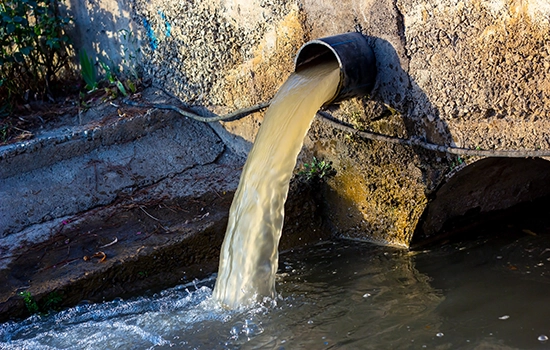Wastewater Monitoring & Stormwater Testing
When most people hear the term wastewater, they probably think about the dirty water from their toilets, sinks, and shower drains that runs into the municipal sewer system. However, for water professionals and those concerned about protecting the environment, wastewater includes domestic and industrial effluent, stormwater runoff, and even special categories such as landfill leachate.
Because different wastewater streams contain different wastewater contaminants and varying levels of dissolved solids, wastewater monitoring can get complicated. Many entities also need to ensure they have the data they need to prove compliance and complete reporting in a timely manner. Pace® provides advanced wastewater monitoring and testing services for a wide range of contaminants to help you meet all your compliance requirements.
How Are Wastewater And Stormwater Runoff Regulated?
Wastewater and stormwater runoff are regulated at both the state and federal level.
Some of these regulations are designed to monitor the level of contaminants in wastewater to determine if further regulations are necessary. If wastewater pollutants are deemed a threat to human health or the environment, additional programs may limit the level of contaminants allowable in wastewater discharge.

Created in 1972 by the Clean Water Act (CWA), the National Pollutant Discharge Elimination System (NPDES) is a permitting program designed to regulate the discharge of pollutants into the waters of the United States (WOTUS). States can petition the United States Environmental Protection Agency (EPA) to administer their own NPDES program, and most states have received partial or full approval. Without a permit, any discharge into a receiving body of water is considered unlawful.
Effluent Limitation Guidelines (ELGs) establish national technology-based regulatory limits for specified pollutants in wastewater discharge (industrial effluent). The EPA updates its Effluent Guidelines Program Plan every two years. It’s important to note that the Effluent Guidelines Program Plan does not set ELGs. It identifies the industries for which ELGs will be set and often calls for more research into specific wastewater scenarios to determine if additional limits are warranted.
The Resource Conservation and Recovery Act (RCRA) is a proactive program regulating municipal and hazardous waste disposal. RCRA’s corrective action program is designed to investigate and guide the cleanup of any contaminated media that results from spills or releases into the environment, including wastewater discharge, from any RCRA-regulated facility.
Wastewater Monitoring & Stormwater Testing Services
Pace® is your go-to resource for wastewater and stormwater sampling, testing, analysis, and monitoring services. Using state-of-the-art equipment for full-service environmental sampling and testing, our experts work with communities and industry. With over 60 laboratories and more than 40 service centers, Pace® wastewater testing services are available nationwide.
Some of the wastewater/stormwater test services we most frequently perform include:
Pace® PFAS Treatability Studies
Pace® PFAS Treatability Studies help clients evaluate the effectiveness of technologies and strategies for PFAS removal, remediation, and destruction.
By conducting a Treatability Study, environmental engineers and scientists can optimize remediation strategies, ensure regulatory compliance, and build public trust.
Additional Resources
-
Pace® Environmental Certifications
-
Pace® Environmental Emergency Response
-
Related Pages
-
Downloadable Resources
-
On-Demand Webinars
Need to find a lab that can handle your unique requirements?
Contact us directly or download our list of environmental certifications across our network.
When disaster strikes, the Pace® Environmental Emergency Response Team is here to help you act fast.
On-Demand Webinar: US EPA Information Collection Rule (ICR) Proposal for PFAS and NPDES